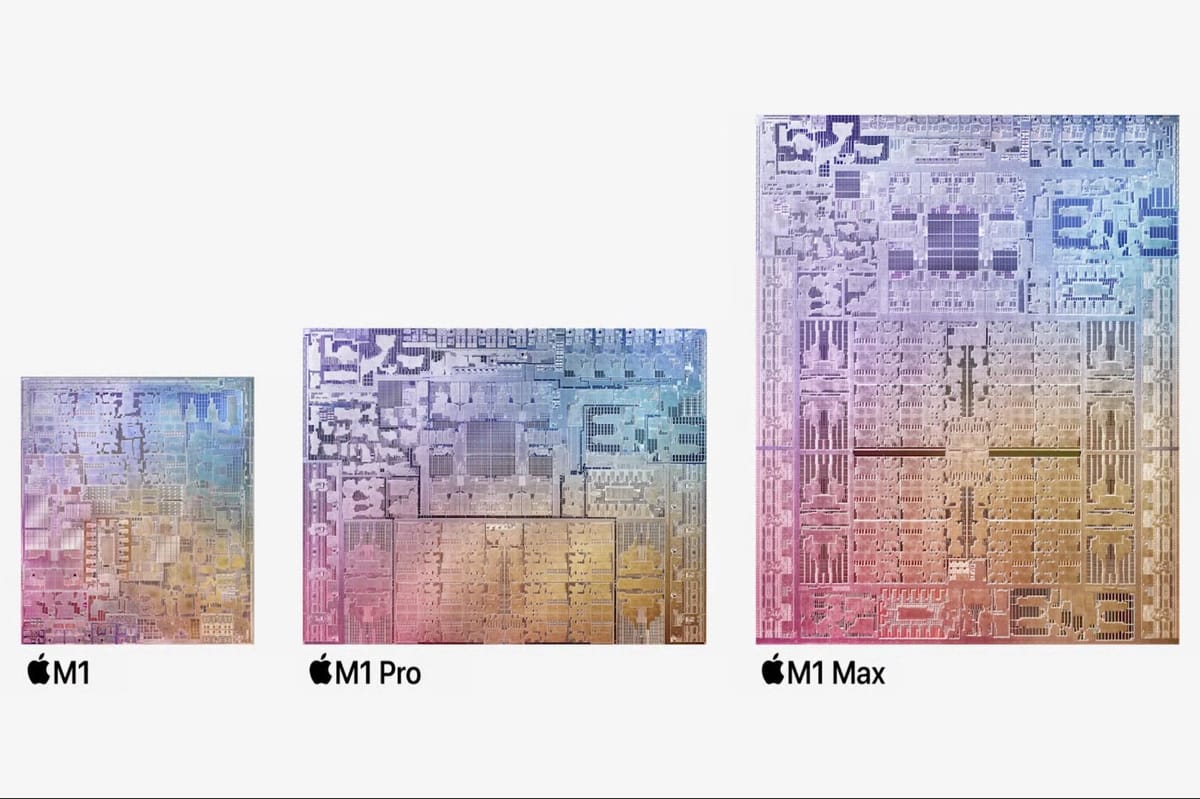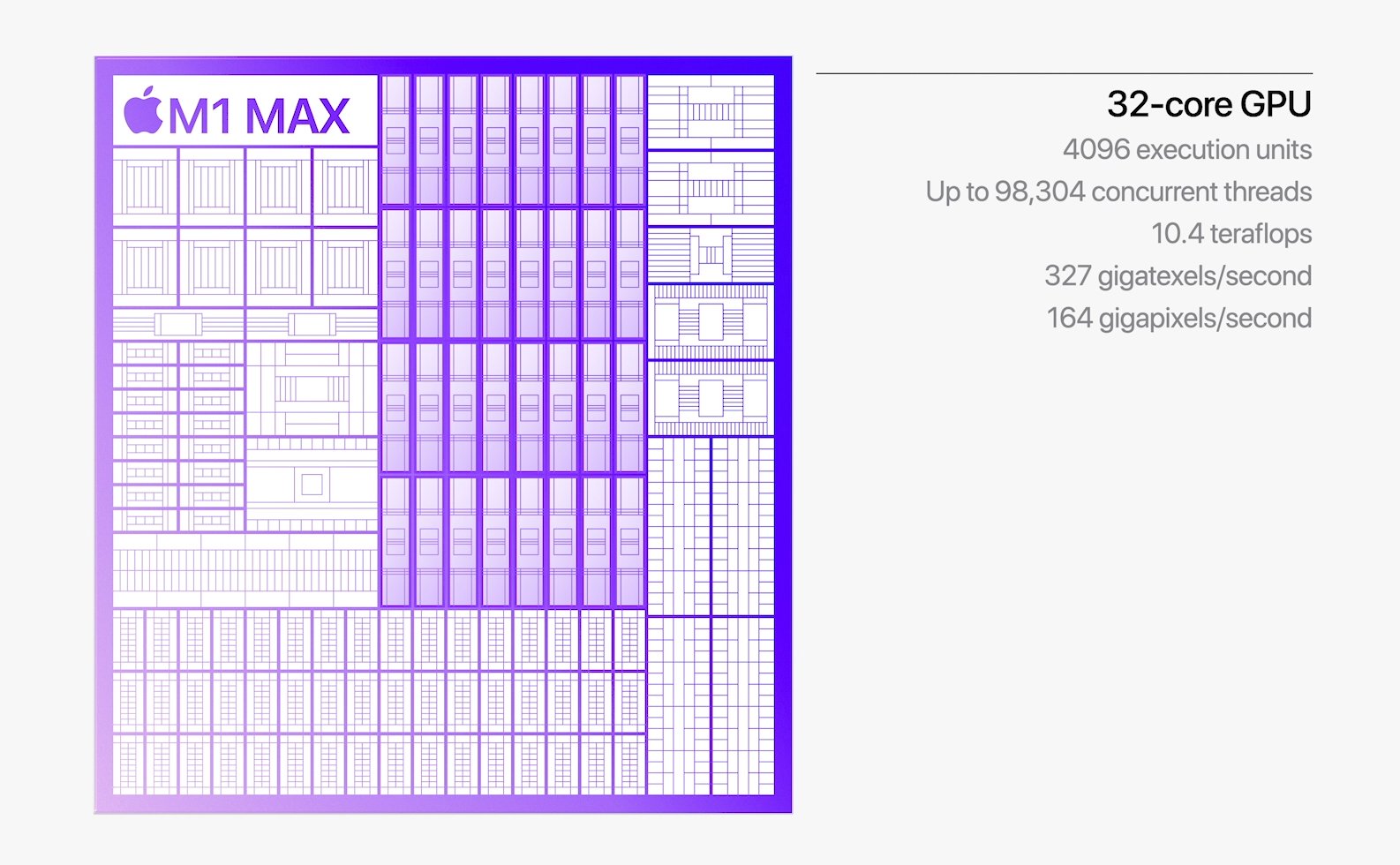
Apple has put two new chips designed in-house on Arm architecture at the heart of the biggest update to the MacBook Pro since 2016 -- with the M1 Pro and M1 Max chips 70% faster than its M1 predecessors which made waves last year as Apple's first Arm chip. The chips look set to outperform Intel’s highest-fire power CPUs and suggest more aggressive efforts than many anticipated to double down on its own silicon designs.
The system-on-chips (SOCs) play host to 33.7 and 57 billion transistors respectively; the RAM sits on the same board as the SoC, so that the distances between memory and compute are extremely short.
See also: AI outperforms humans in chip design breakthrough
The M1 Max features a 10-core CPU, a 32 core GPU that quadruples M1 performance, boasts up to 400GB/s of memory bandwidth and a massive 64GB of fast unified memory. In the new 14" Macbook Pro, that will equate to a huge boost in performance over its last top-of-the-range modely, Apple claimed, including rendering up to 13.4 times faster with Final cut Pro, as just one example. Cupertino has also squeezed huge energy efficiency improvements out of the chips, with the 14" model now delivering a claimed 17 hours of video playback -- seven additional hours -- while the 16" model adding 10 hours, to hit 21 hours of video playback capacity.
https://twitter.com/MKBHD/status/1450150847577481222
The vast amounts of memory available in the laptops will be a particular game-changer, the company boasts, claiming "3D artists on the new MacBook Pro can now easily work with extreme geometry and textures in scenes that pro PC laptops can’t even run." (That particular claim was based on tests comparing pre-production machines packing top Apple chip and memory configurations vs "production Intel Core i9-based PC systems with NVIDIA Quadro RTX 6000 graphics with 24GB GDDR6, production Intel Core i9-based PC systems with NVIDIA GeForce RTX 3080 graphics with 16GB GDDR6, and the latest version of Windows 10 available at the time of testing.")
(Developers working in Xcode meanwhile will be able to compile up to 4x as much code, Apple said.)

Applications need recompiling to run on Arm instead of Intel's more industry standard x86 architecture, but Apple said all of its apps are now "optimized for and run natively on M1 Pro and M1 Max", pointing to "over 10,000 Universal apps and plug-ins available, including Lightroom Classic, Cinema 4D, Capture One, and many more" across the broader Apple applications ecosystem.
(Apple also provides Rosetta 2: a tool for translating code intended for Intel processors so that the Arm chips understands it. This has caused some lag and bugs on M1 machines.)
Todays release shows Apple aiming squarely at the Intel chips that have powered it for so many generations. Compute-hungry designers or other professionals eyeing a 16" MacBook Pro with the M1 Max, 64GB of RAM and a whopping 8TB of SSD storage (yes, thats available) can expect to fork out in the region of $6,099 (or the £ equivalent, plus a bit...) Less compute-hungry buyers can start at $1,999.
